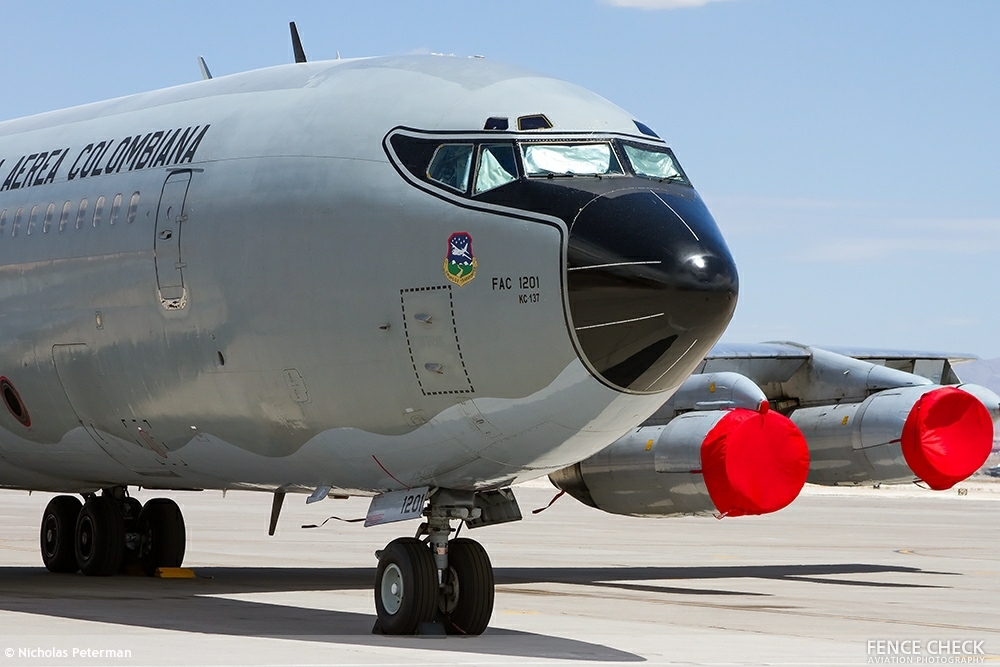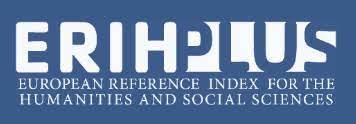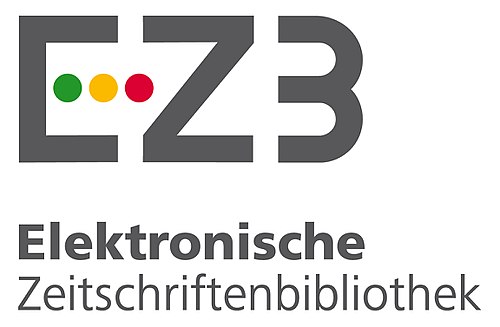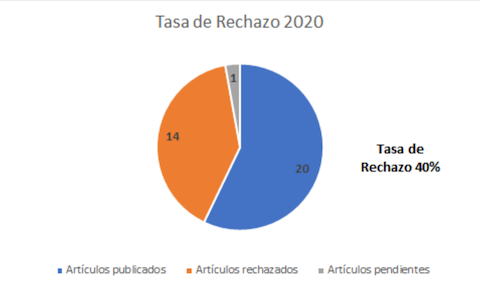Review of network control systems as a basis for small-scale satellite systems
DOI:
https://doi.org/10.18667/cienciaypoderaereo.604Keywords:
multi-agent system, satellite architectures, constellations, network controlAbstract
This article starts from the complementary premise between large-scale satellite systems and small-scale network systems that can supply the same services. Therefore, different approaches to work developed around the contributions of network control systems are presented, as a basis for the development of new technologies in the operation of satellite systems and aerospace services, which have become a permanent challenge for di erent disciplines and de- veloping countries around the world. In this sense, a descriptive review was organized by topics and descriptors for the search of design factors in relation to the operation and control systems that have been a source of work, both for the con guration of constellations and satellite clusters; achieving with this to identify the trends and contributions that have been developed in the eld of multi-agent systems, as well as the necessary guidelines for the formulation of solutions to the coordination needs of low-cost systems, which are capable of providing sustainable alternatives for countries such as Colombia in the face of the democratization of space. With this review, different guidelines for the definition of requirements, the description of architectures and reference models are obtained, as well as some factors of use in comparative technologies, which in practical terms provide the tools for the generation of mission design alternatives. in critical security and defense applications, which can be extended in multi-agent satellite systems approaches.
Downloads
References
Abbott, M. (2000). The Role of Small Satellites in NASA and NOAA Earth Observation Programs, 41-50. https://doi.org/10.17226/9819
Agogino, A., HolmesParker, C. & Tuner, K. (2012). Evolving distributed resource sharing for cubesat constellations. GECCO’12 - Proceedings of the 14th International Conference on Genetic and Evolutionary Computation, 1015–1022. https://doi.org/10.1145/2330163.2330305
Alvarez, J., & Walls, B. (2016). Constellations, Clusters , and Communication Technology: Expanding Small Satellite Access to Space.
Beard, R. W. (2002). Virtual structure based spacecraft formation control with formation feedback. AIAA Guidance, Navigation, and Control Conference and Exhibit, 1-8. Recuperado de https://pdfs.semanticscholar.org/3946/b500ad05a2d9f6c0a9519054e0b7c82e9f77.pdf
Bouwmeester, J., & Guo, J. (2010). Survey of worldwide pico- and nanosatellite missions, distributions and subsystem technology. Acta Astronautica, 67(7–8), 854–862. https://doi.org/10.1016/j.actaastro.2010.06.004
Braukhane, A., Arza, M., Bacher, M., Calaprice, M., Fiedler, H., Koehne, V., … Rivera, J. J. (2010). FormSat, a scalable formation flying communication satellite system. IEEE Aerospace Conference Proceedings, (1). https://doi.org/10.1109/AERO.2010.5446999
Brockett, R. W. (2008). Reduced Complexity Control Systems ?? IFAC Proceedings Volumes (Vol. 41). IFAC. https://doi.org/10.3182/20080706-5-KR-1001.00001
Cao, L., & Chen, X. (2016). Minimum sliding mode error feedback control for inner-formation satellite system with J 2 and small eccentricity, 59(July), 1–18. https://doi.org/10.1007/s11432-016-5573-1
Cao, L., Chen, X., & Sheng, T. (2013). Fault tolerant small satellite attitude control using adaptive non-singular terminal sliding mode. Advances in Space Research, 51(12), 2374–2393. https://doi.org/10.1016/j.asr.2013.02.004
Cao, Y. U., Fukunaga, A. S., Kahng, A. B., & Meng, F. (1997). Cooperative mobile robotics: antecedents and directions. Proceedings 1995 IEEE/RSJ International Conference on Intelligent Robots and Systems. Human Robot Interaction and Cooperative Robots, 1, 226–234. https://doi.org/10.1109/IROS.1995.525801
Castellanos, C. A. y Aparicio, L. E. (2014). Diseño y Simulación de un Sistema de Determinación de Actitud basado en el Filtro Extendido de Kalman para el Cubesat Colombia I. Rev. Fac. Ing. Univ. Antioquia, 70, 146-154
Chen, B., Linz, D. D., & Cheng, H. H. (2008). XML-based agent communication , migration and computation in mobile agent systems, 81, 1364–1376. https://doi.org/10.1016/j.jss.2007.10.026
Chen, Z., & Zeng, Y. (2013). A Swarm Intelligence Networking Framework for Small Satellite Systems. Communications and Network, 5(September), 171–175.
Cruz, D., Mcclintock, J., Perteet, B., Orqueda, O. A. A., Cao, Y., & Fierro, R. (2007). Decentralized cooperative control. IEEE Control Systems Magazine, (June), 58–78.
De Arboleya, J. L. G., & Moreno, J. S. (2012). Multiagent attitude control system for satellites based in momentum wheels and event-driven synchronization. Journal of the Astronautical Sciences, 59(4), 726–746. https://doi.org/10.1007/s40295-014-0010-4
De Freitas, N. C. A., Filho, P. P. R., De Moura, C. D. G., & Silva, M. P. S. (2016). AgentGeo: Multi-Agent System of Satellite Images Mining. IEEE Latin America Transactions, 14(3), 1343–1351. https://doi.org/10.1109/TLA.2016.7459619
Dhios, R. A. (2013). Paradigma de “ Agentes de Software ” aplicado al desarrollo de satélites amateurs ., 1–5. VII Congreso Argentino de Tecnología Espacial. Mayo 15-17, 2013. Mendoza, Argentina.
Díaz González, F. A., Quintero Torres, S. V., Triana Correa, J. S. & Morón Hernández. D. C. (2014). Aproximación a los sistemas de percepción remota en satélites pequeños.
Dorigo, M., Birattari, M., & Stutzle, T. (2006). Ant colony optimization. IEEE Computational Intelligence Magazine, 1(4), 28–39. https://doi.org/10.1109/MCI.2006.329691
Edlerman, E., & Kronhaus, I. (2016). Analysis of electric propulsion capabilities in establishment and. March 2016, Conference: 6th International Conference on Astrodynamics Tools and Techniques, https://www.researchgate.net/publication/304800017_
Engelen, S. (2016). Swarm Satellites: Design, Characteristics and Applications. TU Delft University (Vol. 91). Doi: 10.4233/ uuid:a5dbc5f7-039b-431b-8f32-d3394e690348, https://repository.tudelft.nl/islandora/object/uuid:a5dbc5f7-039b-431b-8f32-d3394e690348?collection=research
Forero, D. R., & Libertadores, F. U. L. (2015). aerodinámica de un globo sonda recuperable y reutilizable 1.
Gill, E., Sundaramoorthy, P., Bouwmeester, J., Zandbergen, B., & Reinhard, R. (2013). Acta Astronautica Formation flying within a constellation of nano-satellites : The QB50 mission. Acta Astronautica, 82(1), 110–117. https://doi.org/10.1016/j.actaastro.2012.04.029
Guerman, A., Ovchinnikov, M., Smirnov, G., & Trofimov, S. (2012). Closed Relative Trajectories for Formation Flying with Single- Input Control, 2012. https://doi.org/10.1155/2012/967248
Gurfil, P., Herscovitz, J., & Pariente, M. (2014). SSC12-VII-2 The SAMSON Project – Cluster Flight and Geolocation with Three Autonomous Nano-satellites.
Hawe, G. I., Coates, G., Wilson, D. T., & Crouch, R. S. (2012). Agent- Based Simulation for Large-Scale Emergency Response : A Survey of Usage and Implementation, 45(1). https://doi.org/10.1145/2379776.2379784
Huang, H., Yang, L., Zhu, Y., & Zhang, Y. (2014). Acta Astronautica Collective trajectory planning for satellite swarm using intersatellite electromagnetic force. Acta Astronautica, 104(1), 220–230. https://doi.org/10.1016/j.actaastro.2014.07.032
Jadbabaie, A., Lin, J., & Morse, A. S. (2003). Coordination of Groups of Mobile Autonomous Agents Using Nearest Neighbor Rules, 48(6), 988–1001.
Ji, M., Member, S., Egerstedt, M., & Member, S. (2007). Distributed Coordination Control of Multiagent Systems While Preserving Connectedness, 23(4), 693–703.
Julián, V., & Botti, V. (2003). Estudio de métodos de desarrollo de sistemas multiagente. Inteligencia Artificial. Revista Iberoamericana de Inteligencia Artificial, 7(18), 65-80. Recuperado de http://www.redalyc.org/articulo.oa?id=92501806
Kempton, L. C., Herrmann, G., & di Bernardo, M. (2017). Distributed optimisation and control of graph Laplacian eigenvalues for robust consensus via an adaptive multilayer strategy. International Journal of Robust and Nonlinear Control, 1–9. https://doi.org/10.1002/rnc.3808
Kempton, L., Herrmann, G., & di Bernardo, M. (2016). Distributed adaptive optimization and control of network structures. 2016 IEEE 55th Conference on Decision and Control (CDC), (Cdc), 5839–5844. https://doi.org/10.1109/CDC.2016.7799167
Kong, E. M. C., Kwon, D. W., Schweighart, S. A., Elias, L. M., Sedwick, R. J., Miller, D. W., & Case, T. (2004). Electromagnetic Formation Flight for Multisatellite Arrays, 41(4).
Kumar, V. (2017). Autonomous Formation Keeping of Geostationary Satellites with Regional Navigation Satellites and Dynamics. Journal of Guidance, Control, and Dynamics, 1–21. https://doi.org/10.2514/1.G001652
Kwak, J., Scerri, P., Tambe, M., Sert, O., & Freedy, A. (2011). Towards a Robust MultiAgent Autonomous Reasoning System (MA-ARS): An Initial Simulation Study for Satellite Defense. AIAA Infotech at Aerospace, (March), 1–17.
J.R.T. Lawton & B.J. Young. (1999). Decentralized approach to elementary formation maneuvers. http://www.et.byu.edu/~beard/papers/library/lawton-tra99.pdf
Lawton, J. R., & Beard, R. W. (2002). Synchronized multiple spacecraft rotations, 38, 1359–1364.
Lesser, V. R. (1995). Systems : An Emerging Subdiscipline of AI, 27(3).
Lesser, V. R. (1995). Systems : An Emerging Subdiscipline of AI, 27(3).
Lesser, V. R. (1999). Cooperative multiagent systems: a personal view of the state of the art. IEEE Transactions on Knowledge and Data Engineering, 11(1), 133–142. https://doi.org/10.1109/69.755622
Li, J., Pan, Y., & Kumar, K. D. (2010). Formation Flying Control of Small Satellites, (August), 1–25. https://doi.org/10.2514/6.2010-8296
Lowe, C. J., & Macdonald, M. (2014). Acta Astronautica Rapid model-based inter-disciplinary design of a CubeSat mission. Acta Astronautica, 105(1), 321–332. https://doi.org/10.1016/j.actaastro.2014.10.002
Ma, Y., Jiang, W., Sang, N., & Zhang, X. (2012). ARCSM: A distributed feedback control mechanism for security-critical real-time system. Proceedings of the 2012 10th IEEE International Symposium on Parallel and Distributed Processing with Applications, ISPA 2012, (2), 379–386. https://doi.org/10.1109/ISPA.2012.56
Martin, M., Klupar, P., Kilberg, S. & Winter, J. (1997). TechSat 21 and revolutionizing space missions using microsatellites. American Institute of Aeronautics and Astronautics. 1–10. https://digitalcommons.usu.edu/smallsat/2001/All2001/3/
Martinez, R. (2015). Diseño de un controlador para la formación de grupos de robots móviles, Conference: XVI Congreso Latinoamericano de Control Automático, CLCA At: Cancún, Quintana Roo, México, https://www.researchgate.net/publication/280946697.
Mazal, L., & Gurfil, P. (2014). Acta Astronautica Closed-loop distance- keeping for long-term satellite cluster flight. Acta Astronautica, 94(1), 73–82. https://doi.org/10.1016/j.actaastro.2013.08.002
Mclainl, T. W., Chandler, P. R., Rasmussen, S., & Pachter, M. (2001). Cooperative Control of UAV Rendezvous.
Medina, C. (2017). Nanosatélites.
Mier-hicks, F., & Lozano, P. C. (2017). Spacecraft Charging and Attitude Control Characterization of Electrospray Thrusters on a Magnetically Levitated Testbed, (February).
Mo, Y., & Murray, R. M. (2017). Privacy Preserving Average Consensus, 62(2), 753–765.
Moradi, M. H., Razini, S., & Hosseinian, S. M. (2016). State of art of multiagent systems in power engineering : A review. Renewable and Sustainable Energy Reviews, 58, 814–824. https://doi.org/10.1016/j.rser.2015.12.339
Murray, R. M. (2007). Recent Research in Cooperative Control of Multivehicle Systems. Journal of Dynamic Systems, Measurement, and Control, 129, 571–583. https://doi.org/10.1115/1.2766721,
Nunes, M (2015). Satellite Constellation Optimization Method for Future Earth Observation Missions Using Small Satellites. Recuperado de https://www.researchgate.net/publication/272161831
Olfati-saber, B. R., Fax, J. A., & Murray, R. M. (2007). Consensus and Cooperation in Networked Multi-Agent Systems, 95(1), 215– 233.
Olfati-saber, R., & Murray, R. M. (2004). Consensus Problems in Networks of Agents With Switching Topology and Time-Delays, 49(9), 1520–1533.
Olfati-saber, R., & Shamma, J. S. (2005). Consensus Filters for Sensor Networks and, (0), 6698–6703.
Ortega, F. (2006). Sistemas Multiagente y Fútbol de robots : Estado del Arte, 1–7. Retrieved from http://citeseerx.ist.psu.edu/viewdoc/similar?doi=10.1.1.83.5889&type=cc
Padron, A. M., Nebylov, A. & Knyazhsky, A. (2017). Verification of the Precise Orbital Holding of Small Satellite Formation for Remote Control of Robots on a Planet Surface, 360–363.
Poghosyan, A., & Golkar, A. (2016). Progress in Aerospace Sciences CubeSat evolution : Analyzing CubeSat capabilities for conducting science missions. Progress in Aerospace Sciences, (September), 1–25. https://doi.org/10.1016/j.paerosci.2016.11.002
Poveda G, O. S. (2016). Integración de satélites en el desarrollo de operaciones militares aéreas en Colombia según su órbita.
Radhakrishnan, R., Edmonson, W. W., Afghah, F., Rodriguez-osorio, R. M., Pinto, F. & Burleigh, S. C. (2016). Survey of Inter-Satellite Communication for Small Satellite Systems: Physical Layer to Network Layer View.
Ren, W. (2006). Consensus Based Formation Control Strategies for Multi-vehicle Systems. American Control Conference Minneapolis, 4237–4242
Ren, W. & Beard, R. W. (2004). Decentralized Scheme for Spacecraft Formation Flying via the Virtual Structure Approach, 27(1), 73–82.
Ren, W., Beard, R. W., Atkins, E. M. & Theory, A. G. (2005). A Survey of Consensus Problems in Multi-agent Coordination, 1859–1864.
Ren, W., Chao, H., Member, S., Bourgeous, W. & Member, S. (2008). Experimental Validation of Consensus Algorithms for Multivehicle Cooperative Control, 16(4), 745–752.
Richard, M. (2009). Cooperative control of distributed autonomous systems with applications to wireless sensor networks.
Rouff, C. (2000). Process for Introducing Agent Technology into Space Missions. IEEE Aerospace Conference Proceedings, 2743–2750. DOI: 10.1109/AERO.2001.931295, Recuperado de: https://ieeexplore.ieee.org/document/931295/
Ryan, A., Zennaro, M., Howell, A., Sengupta, R. & Hedrick, J. K. (2004). An overview of emerging results in cooperative UAV control. Decision and Control, 2004. CDC. 43rd IEEE Conference On, 1, 602–607 Vol.1. https://doi.org/10.1109/CDC.2004.1428700
Saaj, C. M., Bandyopadhyay, S. & Bandyopadhyay, B. (2010). Robust Control And Path Planning Algorithms For Small Satellite Formation Flying Missions. IAC-09-B4., 1–7. Recuperado de https://pdfs.semanticscholar.org/6d71/290b5ffde8e9d326dbd6499ae9a7cbf709d4.pdf
Sadeghi, S. & Emami, M. R. (2017). ScienceDirect Multi-spacecraft studies of the auroral acceleration region : From cluster to nanosatellites. Advances in Space Research, 59(5), 1173–1188. Doi: https://doi.org/10.1016/j.asr.2016.11.037
Scharnagl, J., Scharnagl, J., Schilling, K., Schilling, K., Scharnagl, J. & Schilling, K. (2016). ScienceDirect Hardware-in-the- Loop Hardware-in-the-Loop Hardware-in-the-Loop Mobile Based on on Mobile Mobile Robot Platforms. IFAC-PapersOnLine, 49(30), 65–70. Doi: https://doi.org/10.1016/j.ifacol.2016.11.127
Schilling, K. (2017). Perspectives for miniaturized, distributed, networked cooperating systems for space exploration. Robotics and Autonomous Systems, 90, 118–124. Doi: https://doi.org/10.1016/j.robot.2016.10.007
Sedwick, R. J., Supervisor, T., Miller, D. W. & Velde, W. E. Vander. (2001). Development and Analysis of a High Fidelity Linearized J 2 Model for Satellite Formation Flying.
Shao, X., Song, M., Wang, J., Zhang, D. & Chen, J. (2017). Satellite formation keeping using differential lift and drag under J2 perturbation. Doi: https://doi.org/10.1108/AEAT-06-2015-0168
Sirigineedi, G., Tsourdos, A., White, B. A. & Zbikowski, R. (2011). Kripke modelling and verification of temporal specifications of a multiple UAV system, 31–52. Doi: https://doi.org/10.1007/s10472-011-9270-x
Skinnemoen, H. (2014). UAV & Satellite Communications. IEEE, Conference on Aerospace Electronics and Remote Sensing Technology (ICARES), 12–19.
Sorensen, T. (junio, 2014). Cooperative Control of Multiple Small Satellites using the Comprehensive Open-architecture Space Mission Operations System Cooperative Control Of Multiple Small Open-Architecture Space Mission Operations.
Sun, Y. (2012). Average consensus in networks of dynamic agents with uncertain topologies and time-varying delays. Journal of the Franklin Institute, 349(3), 1061–1073. Doi: https://doi.org/10.1016/j.jfranklin.2011.12.007
Sundararaman, B., Buy, U. & Kshemkalyani, A. D. (2005). Clock synchronization for wireless sensor networks : a survey, 3, 281– 323. Doi: https://doi.org/10.1016/j.adhoc.2005.01.002
Taylor, P., Wang, Q., Gao, H., Alsaadi, F. & Hayat, T. (octubre, 2014). Systems Science & Control Engineering : An Open An overview of consensus problems in constrained multi-agent coordination, 37–41. Doi: https://doi.org/10.1080/21642583.2014.897658
Truszkowski, W., Rash, J., Rouff, C. & Hinchey, M. (2004). Some autonomic properties of two legacy multi-agent systems - LOGOS and ACT. Proceedings - 11th IEEE International Conference and Workshop on the Engineering of Computer-Based Systems, ECBS 2004, 490–498. Doi: https://doi.org/10.1109/ECBS.2004.1316738
Tsarev, A. (2013). Smart Solutions: Multi-Agent Technology for Real- Time Enterprise Resource Management. IEEE/ACIS 12th International Conference on Computer and Information Science (ICIS), 1–6. Doi: 10.1109/ICIS.2013.6607827. Recuperado de https://ieeexplore.ieee.org/document/6607827/
Villaplana, E. (2008). Gormas: guías para el desarrollo de sistemas multiagente abiertos basados en organizaciones. Tesis Doctorado en informatica Universidad Politécnica de Valencia.
Wang, B., Wang, J., Zhang, B., S. & Li, X. (2016). Global Cooperative Control Framework for Multiagent Systems Subject to Actuator Saturation With Industrial Applications. IEEE Transactions on Systems, Man, and Cybernetics: Systems. 1–14. Doi: 10.1109/TSMC.2016.2573584
Wang, C., Li, J., Jing, N., Wang, J., & Chen, H. (2011). A distributed cooperative dynamic task planning algorithm for multiple satellites based on multi-agent hybrid learning. Chinese Journal of Aeronautics, 24(4), 493–505. Doi: https://doi.org/10.1016/S1000-9361(11)60057-5
Wang, P. (septiembre, 1996). Coordination and control of multiple microspacecraft moving in formation.
Wawrzaszek, R. & Banaszkiewicz, M. (2007). Control and reconfiguration of satellite formations by electromagnetic forces. Journal of Telecommunications and Information Technology. 1, 54-58. Recuperado de http://yadda.icm.edu.pl/baztech/element/bwmeta1.element.baztech-article-BAT8-0005-0012
Wei Ren, Randal W. Beard, & E. M. A. (abril, 2007). Information Consensus in Multivehicle Cooperative Control. IEEE Control Systems Magazine, 71–82.
Weidow, D., Bristow, J. & Weidow, D. A. (1999). NASA/DoD University Nano-Satellites for Distributed Spacecraft Control.
Xiang, C. A. O. & Daqi, Z. H. U. (julio, 2013). A Survey of cooperative hunting control algorithms for multi-AUV systems. Conferencia presentada en Proceedings of the 32nd Chinese Control Conference, 5791-5795. Recuperado de https://ieeexplore.ieee.org/document/6640452/
Xu, Y., Fitz-Coy, N., Lind, R. & Tatsch, A. (enero, 2007). μ Control for Satellites Formation Flying. Journal of Aerospace Engineering, 20(1). Doi: https://doi.org/10.1061/(ASCE)0893-1321(2007)20:1(10)
Yeh, H., Sparks, A. & Force, A. (junio, 2000). Geometry and Control of Satellite Formations. Conferencia presentada en Proceedings of the 2000 American Control Conference. ACC (IEEE Cat. No.00CH36334) Doi: 10.1109/ACC.2000.878926, 384–388. Recuperado de https://ieeexplore.ieee.org/document/878926/
Zampieri, S. (2008). Trends in Networked Control Systems. IFAC Proceedings Volumes (Vol. 41). IFAC. Doi: https://doi.org/10.3182/20080706-5-KR-1001.00486
Zenick, R. G. & Kohlhepp, K. (2001). GPS Micro Navigation and Communication System for Clusters of Micro and Nanosatellites. Conferencia presentada en 2001 IEEE Aerospace Conference Proceedings (Cat. No.01TH8542), doi: 10.1109/ AERO.2001.931212. Recuperado de https://ieeexplore.ieee.org/document/931212/
Zetocha, P., Self, L., Wainwright, R. & Burns, R., Brito, M. & Surka, D. (2000). Commanding and controlling satellite clusters. IEEE Intelligent Systems, 15(6), 8-13. doi:10.1109/5254.895850. Recuperado de https://www.computer.org/csdl/mags/ex/2000/06/x6008-abs.html
Zhang, H. & Gurfil, P. (2015). Acta Astronautica Satellite cluster flight using on-off cyclic control $. Acta Astronautica, 106, 1–12. Doi: https://doi.org/10.1016/j.actaastro.2014.10.004
Zhang, H. & Gurfil, P. (2016). Cooperative Control of Multiple Satellites via Consensus. Conferencia presentada en 2016 24th Mediterranean Conference on Control and Automation (MED), 1102–1107. Dio: 10.1109/MED.2016.7536011. Recuperado de https://ieeexplore.ieee.org/document/7536011/
Zhu, A. & Yang, S. X. (2010). A Survey on Intelligent Interaction and Cooperative Control of Multi-robot Systems. Conferencia presentada en IEEE ICCA 2010. 1812–1817. Doi: 10.1109/ ICCA.2010.5524132. Recuperado de https://ieeexplore.ieee.org/abstract/document/5524132/
Zhu, J., Yang, Q., Huang, W. & Lu, R. (2015). A formal model of satellite communication system network control protocol based on generalized stochastic Petri nets. 2015 IEEE International Conference on Computer and Communications (ICCC), 340– 346. Doi://doi.org/10.1109/CompComm.2015.7387593

Downloads
Published
Issue
Section
License
Assignment of Copyrights
Authors assign Ciencia y Poder Aéreo journal the exclusive rights (reproduction, distribution, public communication, and transformation) to exploit and commercialize their work, in whole or in part, in all the formats and modalities of present or future exploitation, in all languages, throughout the life of the work and throughout the world.
All contents published in Ciencia y Poder Aéreo journal are licensed under a Creative Commons Attribution 4.0 International License, whose complete information is available at http://creativecommons.org/licenses/by/4.0/
Under the terms of this license, users are free to download, print, extract, archive, distribute and publicly communicate the content of articles, provided that proper credit is granted to authors and Ciencia y Poder Aéreo, scientific journal of the Graduate School of the Colombian Air Force. Except when otherwise indicated, this site and its contents are licensed under a Creative Commons Attribution 4.0 International License.
For other uses not considered under this license it is required to contact the Director or the Editor of the journal at the e-mail address cienciaypoderaereo1@gmail.com.
The Graduate School of the Colombian Air Force and this publication are not responsible for the concepts expressed in the articles, including the metadata or the affiliation stated by authors. This is the full responsibility of the authors.





















